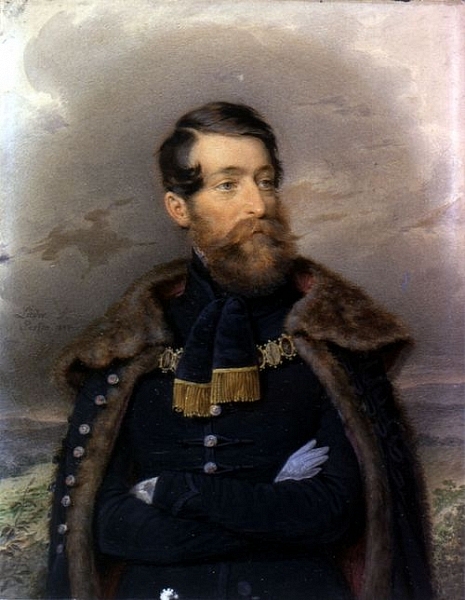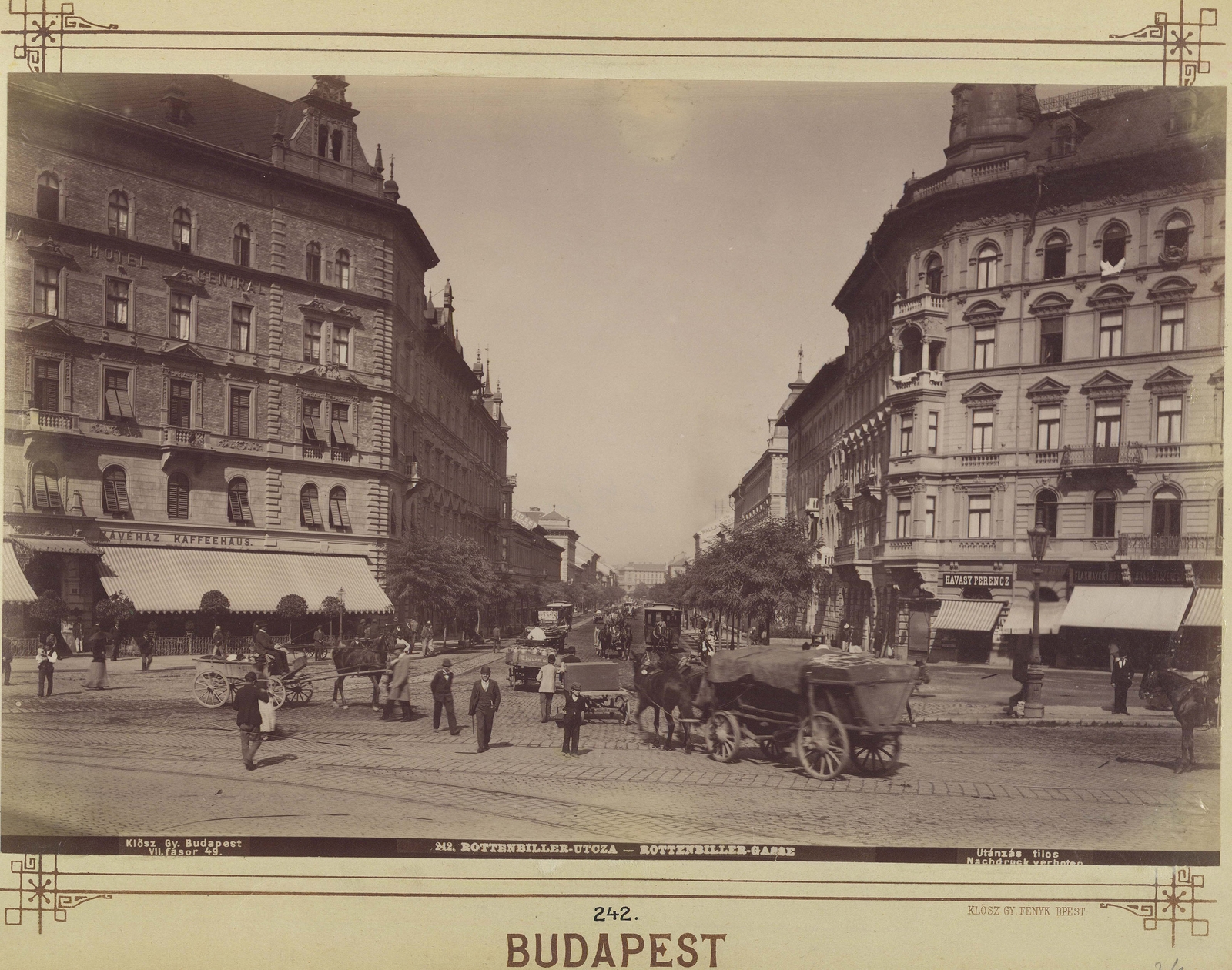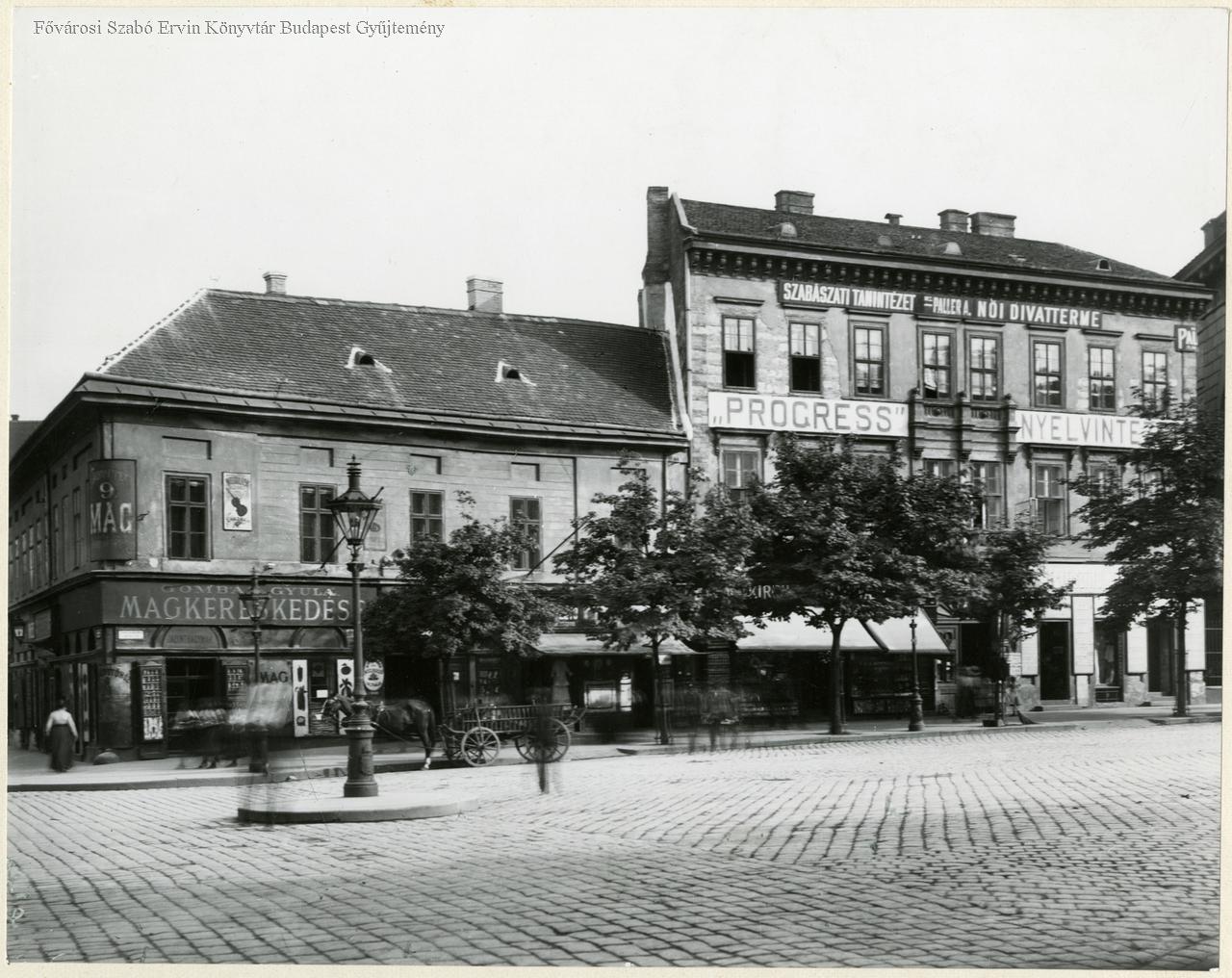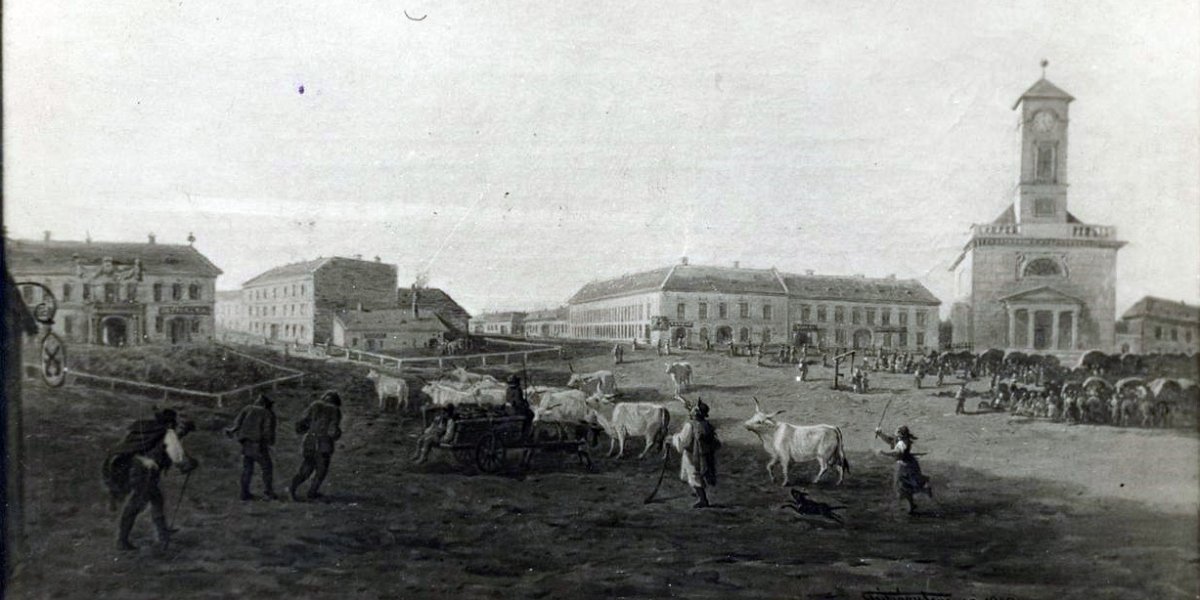After more than a decade of stagnation, change came slowly to Hungary in the 1860s. The National Diet (assembly) was reconvened, and Buda and Pest were granted some form of self-governance. The failures of a decade of repression forced Vienna to change its policies. As a result, Ferenc József issued the October Diploma in 1860, which restored parts of the Hungarian constitution. As a result, the City Council of Pest could be re-formed at the end of 1860.
As a result, in January 1861, a man whose work left a lasting mark on the city was elected to lead Pest. He was Leopold Rottenbiller.

Friedrich Lieder: Portrait of Leopold Rottenbiller from 1844
The first regular assembly of Pest was held on 27 December 1860 and chaired by Leopold Rottenbiller as interim mayor.
Rottenbiller was not an unknown figure in Budapest and national politics, as he had already been Lord Mayor of Pest for a few months between June 1848 and January 1849.
At the time he was elected by a large majority. His name entered public discourse when he was noted in connection with the loan taken to finance restoration after the 1838 flood. The official, who had worked in the background until then handled the transaction with great skill and financial acumen, and as a result, became well known on a national level.
Rottenbiller was born in 1806 and entered service in the City of Pest in 1826 as an unpaid intern, in 1829, he was already appointed a clerk as a graduate lawyer. Climbing through the ranks, he became deputy Mayor in 1843.
He did not work to make a living. He was from a wealthy family himself, and in 1835 he married, Klára Almay, the daughter of the iron merchant József Almay von Almás. József Almay was born with the name Wurm and built a considerable fortune during the Napoleonic Wars' conjuncture in the early 19th century. He was given the Almay name with the distinguishing name element almási ('von Almás') in 1834 when he was elevated into the nobility.
At the time, Klára Almay had been a widow for four years, and her late husband was none other, than Lieutenant József Rottenbiller. The common name is no accident. The lieutenant who was fatally wounded by a stray bullet during the 1831 cholera riots, was Leopold Rottenbiller's older brother.

Rottenbiller Street in 1900, photographed by György Klösz. The street was named after the former Mayor in 1873, three years after his death (Photo: Fortepan, FSZEK, Archive reference: HU.bfl.xv.19.d.1.08.046)
Jumping back to 1861, as the pressure of Austrian oppression eased, the General Assembly of Pest was convened again, and Rottenbiller became interim mayor. His figure was also acceptable for Vienna because he took no office after January 1849, when imperial troops captured Pest and removed him from office (despite this he was vilified in 1850). He lived a withdrawn life in the 1850s far from politics, but the Hungarian leadership acknowledged his past and standing in 1848.
He returned to the city administration in 1861. And the General Assembly did not remain silent. Its first resolution stated that the October Diploma was a step in the wrong direction, as it was not based on the laws passed in 1848. With this, the Assembly supported the complete restoration of Hungarian legal order. Thus, Rottenbiller did not represent Austrian interests as leader of the city, but National ones.
He held the title of Interim Mayor for a short time after he won 213 votes out of a possible 214 in a vote held on 2 January 1861. A few months later, he became Lord Mayor again. The periodical Politikai Ujdonságok reported on the 28 March 1861 elections as follows:
“On 23 March in Pest, a proper election was held Leopold Rottenbiller was elected Lord Mayor, Károly Horváth Chief Judge, Elek Thaisz Chief of Police, and Ságody Deputy Mayor."
Unfortunately, he could not hold his post for long, in July he retired due to illness. In fact, politics took another turn. The provisions of the October Diploma were unacceptable to Hungarian politicians because they were not based on the laws of 1848. The new February Patent issued in 1861 then changed the laws again, making them even less favourable for Hungary.
Rottenbiller spent the next few years in retirement on his estate, learnt French and played an active role in growing the economy. In 1864 he was the founder of Iparbank és Takarékpénztár ('Industry and Savings Bank').

Rottenbiller house at 8 Kálvin Square in 1912. The house is still standing (Photo: FSZEK Budapest Collection)
In the mid-1860s politics changed again, and the Imperial court in Vienna again began negotiations with Hungarian politicians to settle the two countries' relationship. City councils were reinstated, and Rottenbiller again took his position, as Vasárnapi Ujság wrote in its 22 October 1865 issue:
"For the past few weeks, Leopold Rottenbiller has again been the Lord Mayor of Pest, named such and appointed for the third time by the Master of the Treasury. The public of Pest has endorsed his appointment with unanimous consent, and many believe he will ensure a better future for Pest. We hope that this time we will not be disappointed in the matters of our nation turning for the better, and the consistency of improvements in our relations.”
Rottenbiller was again seen as the person who could lead pest in the transitional period until a new Hungarian administration was set up as a result of the Austro–Hungarian Compromise.
Rottenbiller again served for only a year and a half. In 1867 he retired, mostly because of his health, and did not stand for reelection. A year later, he suffered a stroke, and he was bedridden for the remainder of his life. He died three years before the creation of Budapest to the day, on the 17 November 1870.
Thus, he was the Lord Mayor of Pest three times, for three relatively short periods. However, his governance at three extremely delicate times achieved much, especially in ensuring the city's professional operation. In 1848, during the revolution and the war of independence, he was able to keep the city working. In the 1860s, he started reclaiming land for the city of Pest and building a plumbing network.
Cover photo: Kálvin square in 1844 with Rottenbiller house on the painting by Ferenc Újházy (Source: FSZEK Budapest Collection)





































Hozzászólások
Log in or register to comment!
Login Registration